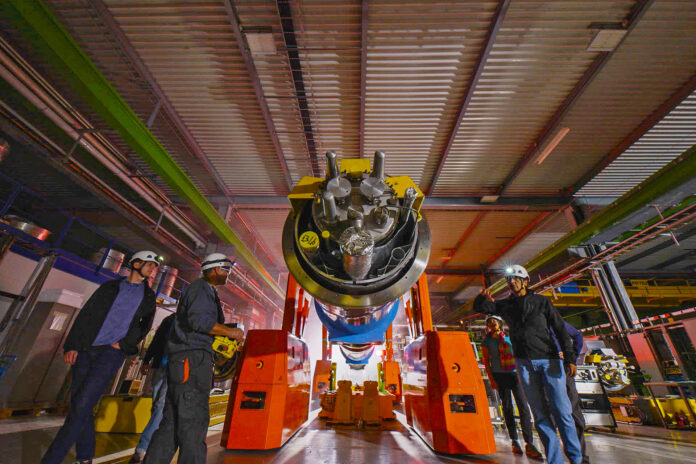“Secrets of the Universe” film explores the powerful forces of the universe and the physics behind what happened shortly after the Big Bang
By KAYA DO-KHANH — campus@theaggie.org
UC Davis Physics Professor Manuel Calderón de la Barca Sánchez and a team of Aggie researchers explore the mysteries of the universe, including the physics behind what happened shortly after the Big Bang, in the IMAX film “Secrets of the Universe.” The 3D film also features the discussion of scientific machines, such as the Large Hadron Collider and James Webb Space Telescope.
During the filming of the documentary, Calderón de la Barca Sánchez and his team collected data at CERN, the European Organization for Nuclear Research, in Switzerland. Ph.D. student Graham Waegel shared that the filming of the documentary gave the research team an opportunity to explore parts of CERN they normally would not have been able to see.
“We knew that if we did this right, we could then give a virtual tour of CERN with the best medium possible: […] the IMAX screen,” Calderón de la Barca Sánchez said.
Calderón de la Barca Sánchez was originally signed on as a scientific advisor for the film to help with writing grants and make sure the science portrayed was accurate, but Director Stephen Low wanted Calderón de la Barca Sánchez to narrate the film to make it more personal. Calderón de la Barca Sánchez disclosed that it was not what he originally signed up for, but he was happy and excited to help with the project.
On May 9, the local premiere of the documentary was shown at the UC Davis Multiverse Theater at the SMUD Museum of Science and Curiosity. There were many in attendance, including members from the UC Board of Regents and the UC Davis Department of Physics. After the showing, there was a Q&A session with Calderón de la Barca Sánchez as well as past and current Ph.D. students Ota Kukral, Jared Jay and Graham Waegel, whose research was featured in the film.
“There was a nice reception with food and drinks, then Chancellor [Gary] May talked a bit,” Kukral said via email. “Then we saw the movie. It was interesting since it was [at] a planetarium, so it was projected on a ceiling. That made it look quite dreamy.”
Low shared that he and Calderón de la Barca Sánchez knew that scientific concepts could be technical and complicated, so they worked on portraying simple ideas that could be conveyed to everyone.
“The question I kept asking [Calderón de la Barca Sánchez] was ‘How do we simplify this so that kids get it?’” Low said. “He kept telling me the same thing — that what [he and his team] were looking for was indeed the simplest thing in the universe.”
“Secrets of the Universe” features a diverse group of Aggie researchers, and the scientific concepts were communicated to appeal to all audiences, according to Calderón de la Barca Sánchez.
“We know that we have a long way to go to reach equity in many different ways in the sciences, so we really wanted to make sure that the film showcased the kind of diversity that we hope we achieve in the sciences,” Calderón de la Barca Sánchez said. “It was clear that we wanted science to be welcoming to everyone, that science is and should be done by everyone.”
“Secrets of the Universe” has been shown across the U.S. as well as in Europe and Asia. There are future plans to have the film shown at the Mondavi Center.
“Getting people aware of and excited about science is so important, and film provides a unique medium for condensing and conveying the most exciting moments,” Waegel said via email. “Fundamental research in particular, such as the heavy-ion experiment documented in this film, is an important part of science that rarely gets much publicity.”
Written by: Kaya Do-Khanh — campus@theaggie.org





